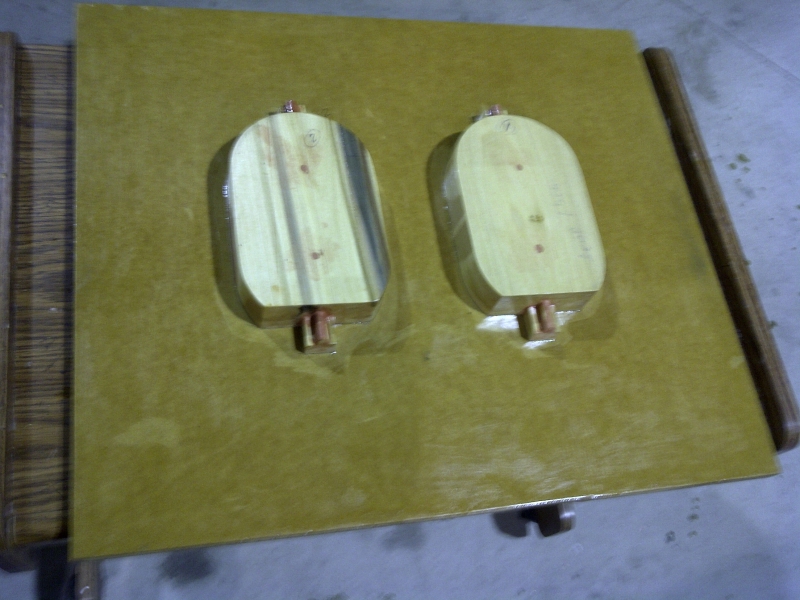With all that funny information I design a 3 piece head, as was the looper beast. Which is the most practical for molding and coring purposes. I will not use a head gasket, but a flanged sleeve with silicon o-rings. I do find it interesting that the Konig did not use anything but interference and per-matex for sealing. Which is what I did on the 6 rotary valve motor at the beginning of this piece. Worked fine. Mainly because it was a open wet sleeve and the head was also open. This allowed the bolts which were place in notches a the sleeve base to actually clamp the cylinder sleeve and the block perimeter by deforming the head to comply.
Now a trailer ball of 1 8/7" size would make a good plug to create the chamber, except that they have a flat on the top. That's acceptable if I can find a ball with the right size flat. While walking thru the Wal Mart auto department a trailer ball in their rack caught my eye. It was a miss-machined ball that had been cut down to far on the blank making the base thin and you guessed it the flat on the top small. The size of a spark plug hole. I bought it.



 Thanks:
Thanks:  Likes:
Likes: 




Bookmarks